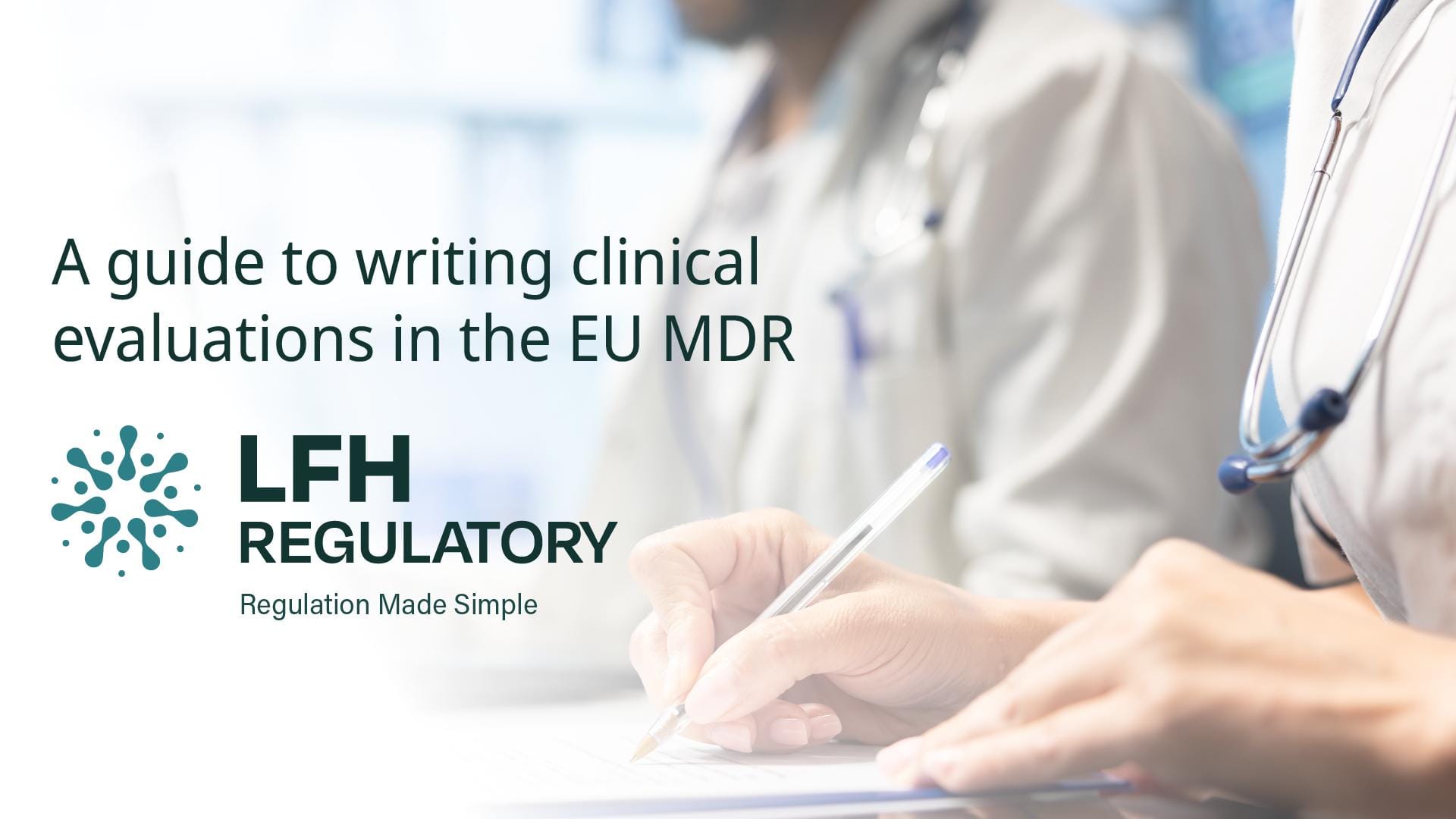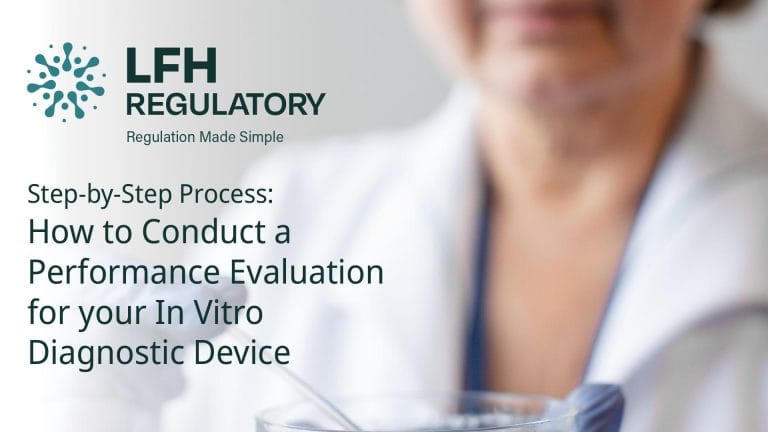Clinical evaluation is one of the most important processes in bringing a medical device to market in the EU. As a regulatory requirement under the EU MDR 2017/745, it ensures your device is clinically safe and performs as intended — and is essential for achieving CE marking.
But where do you start? Below is a practical guide to help you navigate each step of the clinical evaluation process.
What Is a Clinical Evaluation?
A clinical evaluation involves collecting and analysing clinical data to verify the clinical safety and performance of a medical device. It’s not a one-time task — it spans the entire lifecycle of your product.
Conducting a clinical evaluation is required by the EU MDR, specifically outlined in Annex XIV, which details expectations for the Clinical Evaluation Plan (CEP) and the Clinical Evaluation Report (CER). Check out our guide to writing clinical evaluations in the EU here.
Step-by-Step Clinical Evaluation Process
1. Understand EU MDR Requirements
Start by getting familiar with the regulatory framework. Key documents include:
- EU MDR 2017/745
- Annex XIV (for evaluation expectations)
- MEDDEV 2.7/1 Rev 4 (for guidance on literature reviews)
2. Plan Ahead with a Gap Analysis
A strong Clinical Evaluation Report begins with a clear plan. Conduct a gap analysis to identify existing documentation:
- Clinical studies
- Verification & validation data
- Published literature
🔹 LFH’s Top Tip: Consider whether any additional performance standards or guidance documents apply to your device type.
3. Conduct a Literature Review
A comprehensive literature review is mandatory. Search for:
- Published studies on your device
- Similar and equivalent devices
- State-of-the-art technologies
Be transparent — document your search strategy and explain any deviations in the CER.
Need help? MEDDEV 2.7.1/4 has detailed guidance on literature reviews.
4. Collect Clinical Data
Gather clinical data related to your specific device. This might include:
- Clinical investigations
- Real-world post-market surveillance data
- Observational studies
This real-world evidence is a valuable resource for supporting safety claims.
5. Analyse and Evaluate the Data
Once data is gathered, assess:
- Clinical outcomes
- Adverse events
- Patient or user satisfaction
Evaluate whether the data supports your claims of safety, performance, and benefit-risk balance.
6. Update Your Risk Assessment
Your Risk Management File, aligned with ISO 14971:2019, must reflect current data and insights.
Factors to evaluate include:
- Biological, chemical, and mechanical risks
- Usability concerns
- Off-label uses
- Risks identified in PMS or literature
LFH’s Top Tip: Review similar devices — are their known risks relevant to yours?
Related Reading:
Benefits of ISO 13485 QMS
Guide to Creating a Quality Manual
7. Write the Clinical Evaluation Report (CER)
Your CER must include:
- Summary of collected clinical data
- Analysis of safety and performance
- Conclusions on clinical benefit-risk
Ensure consistency between your CER and other technical documents (like IFU and risk assessments).
8. Expert Review
Consider involving clinical or regulatory experts for:
- Independent peer review
- Verification of clinical relevance and data accuracy
- Optimisation of submission strategy
This can reduce pushback from notified bodies.
9. Submit for CE Marking
Incorporate the CER in your technical documentation and submit it as part of your CE marking process.
Double-check for consistency across:
- Intended use
- Risk files
- Post-market plans
- Instructions for Use (IFU)
🔹 LFH’s Top Tip: Align your CER language and claims with the rest of your documentation to avoid red flags during review.
10. Post-Market Surveillance (PMS)
Clinical evaluation doesn’t stop at submission.
Implement a PMS system to:
- Monitor ongoing performance and safety
- Identify new risks
- Update the CER as new data emerges
Ongoing evaluation is key to EU MDR compliance and patient safety.
Summary Checklist
- ✅ Review MDR & Annex XIV
- ✅ Conduct a gap analysis
- ✅ Perform a literature review
- ✅ Collect device-specific clinical data
- ✅ Analyse outcomes and risks
- ✅ Update risk assessment with ISO 14971
- ✅ Draft the CER
- ✅ Submit technical file for CE marking
- ✅ Continuously monitor through PMS
Need Help With Clinical Evaluation?
Whether you need support with writing a Clinical Evaluation Report, conducting a gap analysis, or reviewing your technical documentation, our expert consultants can help.👉 Contact us today to discuss your project.
FAQ’s for Clinical Evaluation
What is a clinical evaluation in medical devices?
A clinical evaluation is the process of collecting and analysing clinical data to confirm that a medical device is safe, performs as intended, and meets EU MDR requirements.
Why is clinical evaluation required under EU MDR 2017/745?
It is a regulatory requirement for CE marking. The process ensures devices meet safety and performance standards throughout their lifecycle.
What documents are essential for clinical evaluation?
Key documents include the Clinical Evaluation Plan (CEP), Clinical Evaluation Report (CER), MEDDEV 2.7/1 Rev 4 for literature reviews, and ISO 14971:2019 for risk management.
What type of data is used in clinical evaluation?
Data may come from clinical investigations, published literature, real-world post-market surveillance, and observational studies on similar or equivalent devices.
How often should a Clinical Evaluation Report (CER) be updated?
The CER must be updated regularly, especially when new clinical data, risks, or post-market surveillance findings become available.
What role does post-market surveillance play in clinical evaluation?
Post-market surveillance (PMS) ensures ongoing monitoring of safety and performance, helps identify new risks, and provides evidence for updating the CER.
Can regulatory experts help with clinical evaluation?
Yes. Experts can support literature reviews, data analysis, gap assessments, and CER writing — reducing the risk of challenges from notified bodies.
Yupei Xiao
Dr Yupei Xiao specialises in regulatory and clinical affairs for in-vitro diagnostics
(IVDs) and medical devices (MD), and she supports clients from startup stage to
market submission. With expertise in performance evaluation, clinical evaluation,
biological evaluation, and quality management systems, she helps companies
navigate complex regulatory landscapes, ensuring compliance with MDR, IVDR, and
ISO 13485:2016 standards.
With a Ph.D. in Respiratory Medicine and over a decade of experience in clinical
trials, medical affairs and regulatory affairs, Yupei has supported startups and
established firms in preparing technical files, conducting post-market surveillance,
and implementing ISO-certified Quality Management Systems, led performance and
clinical evaluations, supported international product registrations, and contributed to
peer-reviewed publications and global regulatory submissions. Her work spans
Medical devices, in-vitro diagnostics (IVDs) including the companion diagnostics,
and Software as a Medical Device (SaMD), with a focus on EU and UK markets.
Yupei combines deep technical knowledge with a practical approach to deliver
compliant, timely outcomes. Her unique perspective bridges clinical science and
regulatory strategy, making her a trusted advisor in the IVD and Medical Device
industry.




